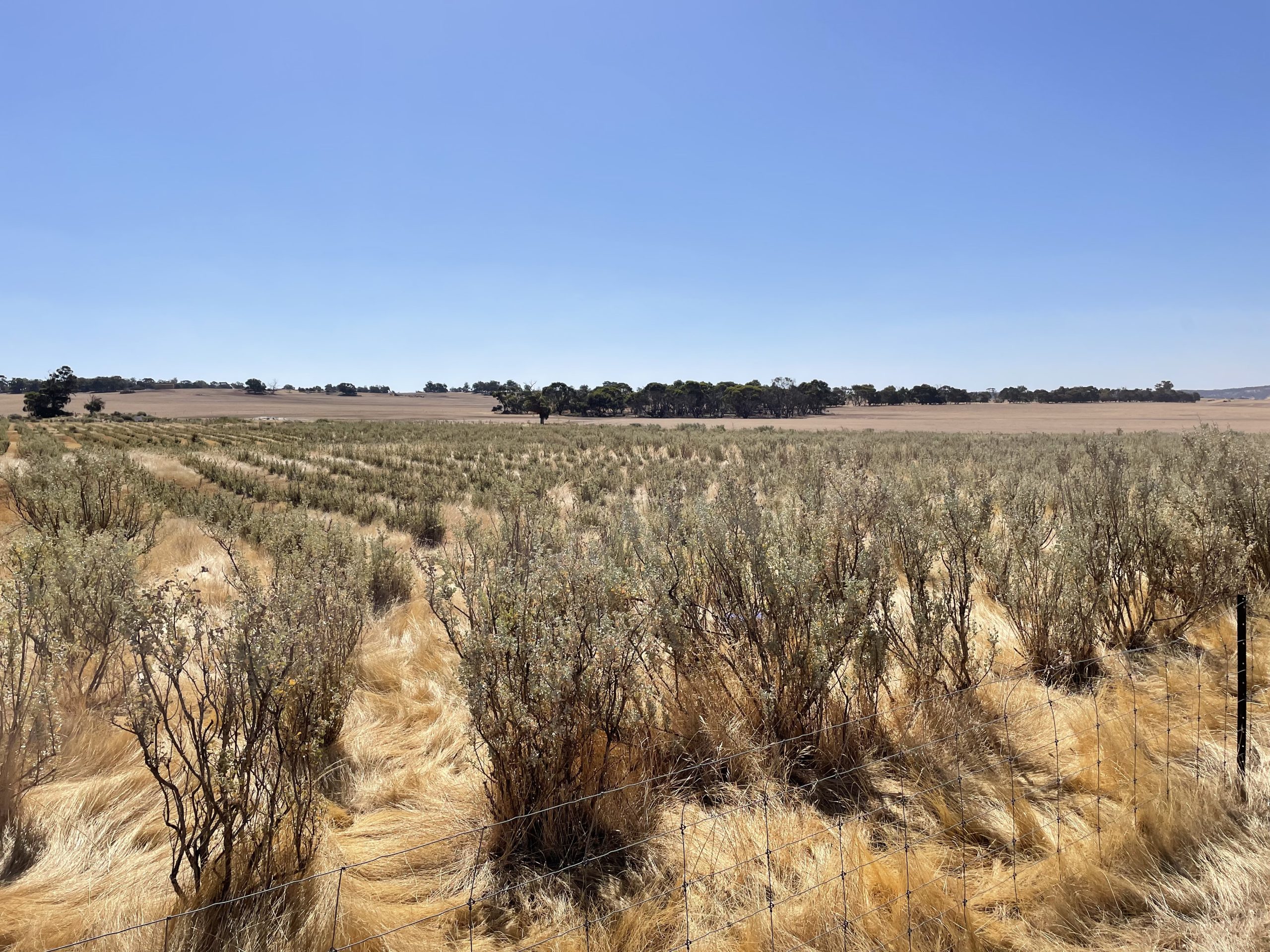
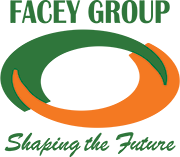

Saltbush and Novel Forage Understorey Systems
Drought-resilient landscapes with profitable native shrubs and legume systems across southern Australia.
Key Messages:
- Novel understory canopies incorporated into saltbush pasture may help with shrub productivity enhancing land function and decreasing dryland salinity risk.
- Incorporating saltbush with self-regenerating legume varieties may improve the profitability of low-production paddocks and regenerate salinity-prone landscapes.
Project Aim:
Deep-rooted native shrubs or novel annual legumes offer significant opportunities to increase livestock feed supply and quality, compared to traditional forages under drought conditions. This CSIRO project will utilise both Anameka saltbush and novel understory species to demonstrate a drought-resilient and profitable system using best practices establishment. Data will be collected at two farmer size demonstration sites to investigate this novel forage system’s economic and environmental benefits.
Project Background:
The lack of drought preparedness and the cost of managing feed gaps associated with climate variability have limited the profitability and economic resilience of mixed farming and rangeland enterprises. The variety, Anameka saltbush, has been proven to increase wool and meat production in relatively dry years, offering a 20% higher economic return compared to standard saltbush. Biserrula and Serradella also show promising results in low to medium-rainfall areas increasing seasonal feed supply by more than 60% with summer sowing. On-farm research has shown that the livestock carrying capacity of drought-tolerant shrubs systems can quadruple when annual legumes dominate the understory. This is because the legumes offer quantities of high-value forage and fix nitrogen to boost the productivity of shrubs and volunteer understory plants.
The project combines this elite native shrub, Amameka Saltbush, with new self-regenerating annual legumes, into profitable and sustainable systems. This collaboration between leading producer groups, nurseries, and researchers, will establish commercial-scale plantations of novel forage systems that can mitigate the impact of drought.
In 2023, the saltbush had a high establishment success rate, and both sites are ready for grazing in Autumn 2024. At the Stratherne site in 2023, the burr medics, Persian clover, and balansa clover were standouts. This was likely associated with the very wet conditions at the site in 2023. By peak biomass in spring, biomass ranged from 2800 (Dalkeith subclover) to 9000 (balansa clover and scimitar medic) kg DM/ha. Tall wheatgrass provided up to 4000 kg/ha of biomass. At the Boundain site in 2023, winter understorey biomass ranged from 300 (gland clover) to 800 (Persian clover) kg DM/ha. By peak biomass in spring, biomass ranged from 2500 (lucerne) to 7000 (rose clover) kg DM/ha. It is unclear if the benefits outweigh the additional challenges in terms of managing annual ryegrass and other grass weeds.
It is too early to assess the impact of the legume nitrogen on the growth of Anameka.
Further Information
Project Start Date: February 2023
Project End Date: July 2024
Project Funding: Future Drought Fund
Project Collaborators: CSIRO
Host Farmers:
- Shaun and Hillary Wittwer, MH Wittwer & Co
- Troy and Carly Smith, Kingussie Farming
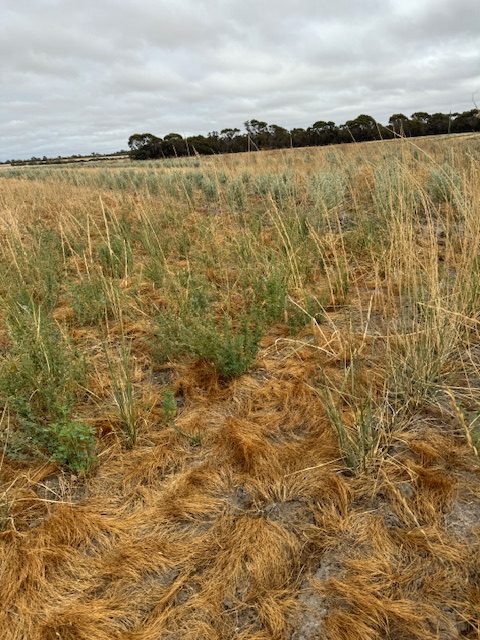
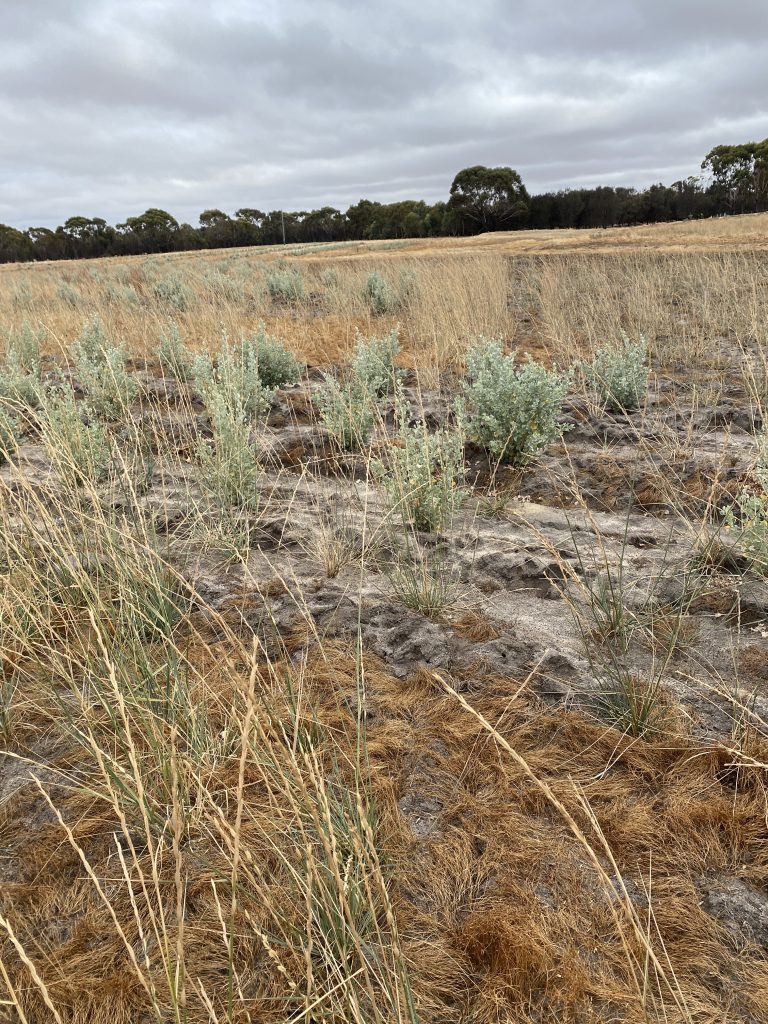
Images: Boundain Trial Site on 12th March 2024
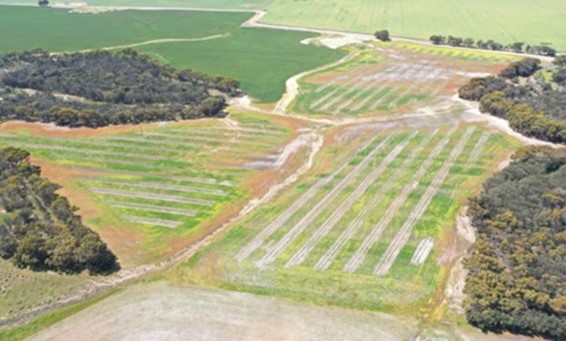
Saltbush site in spring 2023. Saltbush rows have been planted over establishing pastures.
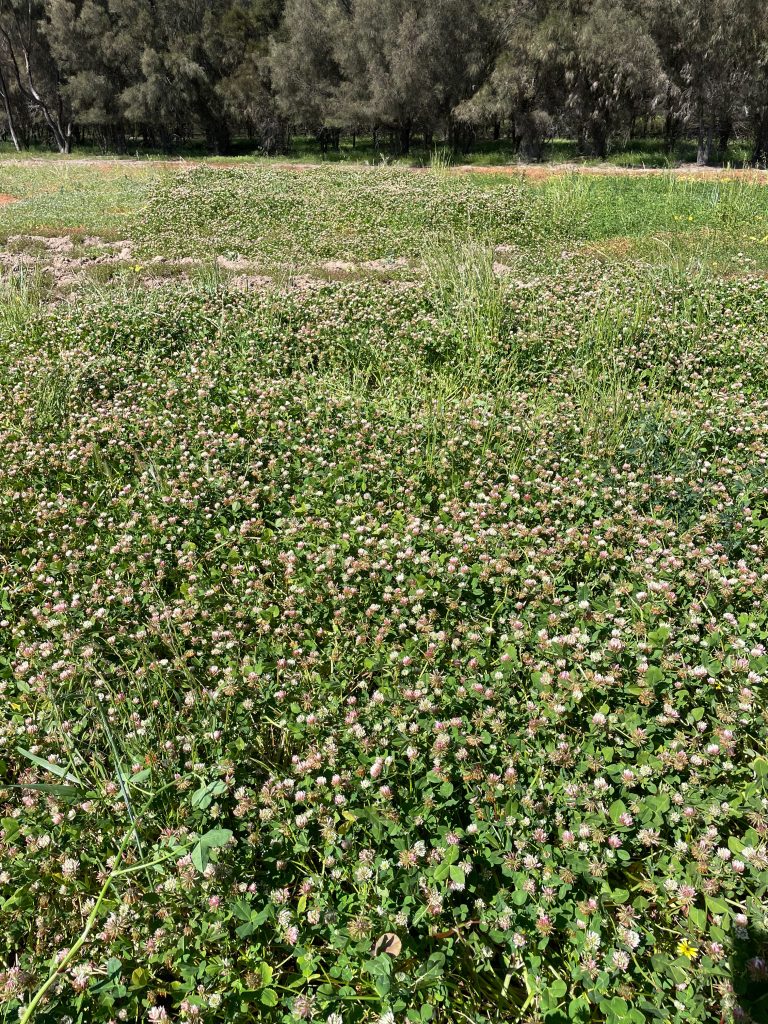
Above: Bladder Clover 3T DMha (Oct 2023)

Above: Roseclover 6T DMha
(Oct 2023)

Above: Burr medic scimitar 6T DMha (Oct 2023)

Above: Tall Wheat Grass 5T DMha (Oct 2023)

Above: Tall Wheat Grass & Balansa
3 half T (Oct 2023)
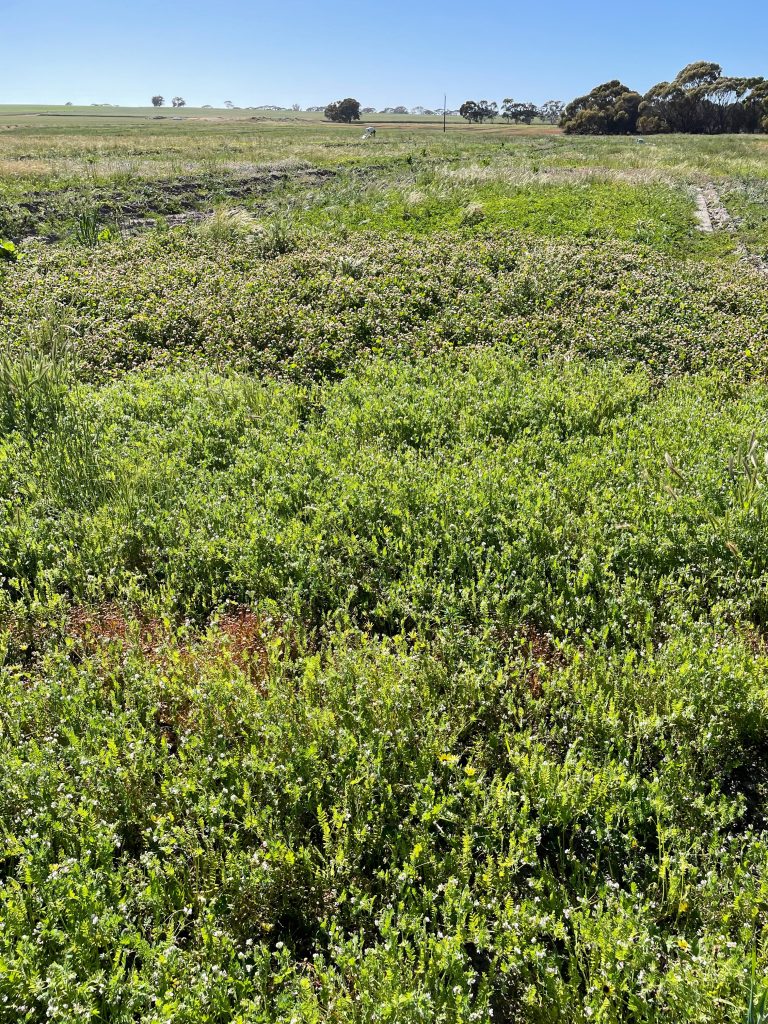
Above: French Serradella 3 half T DM
